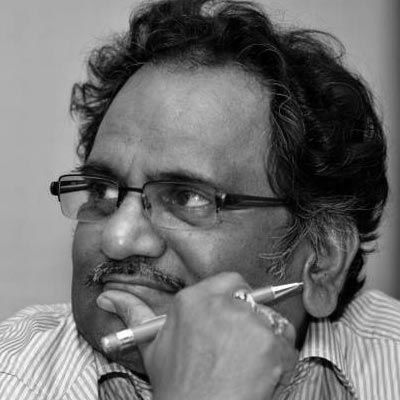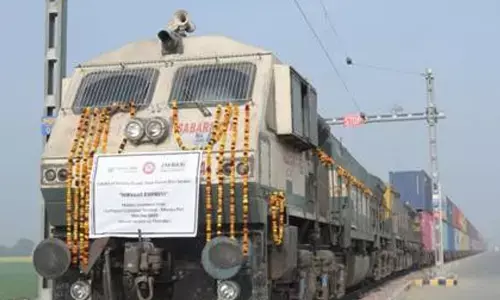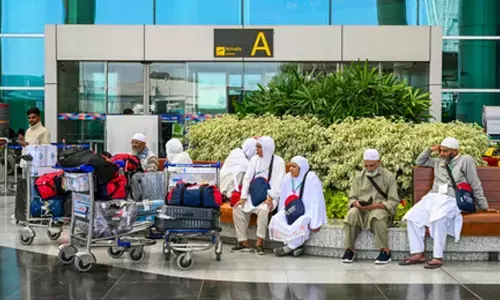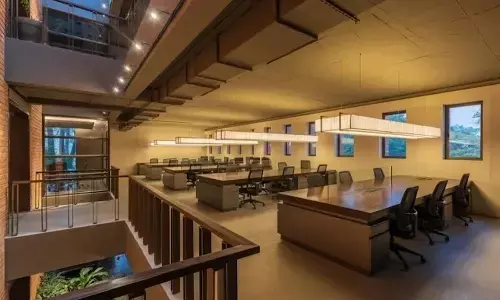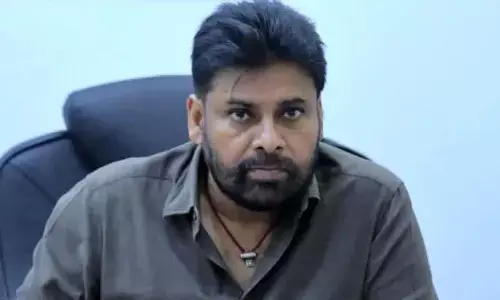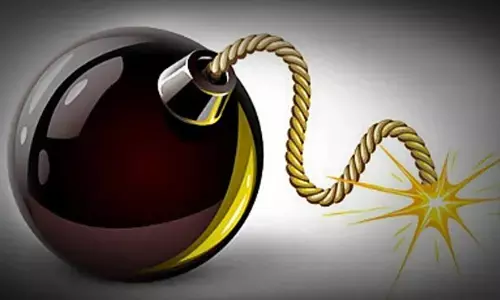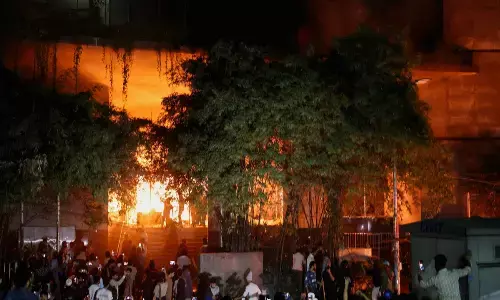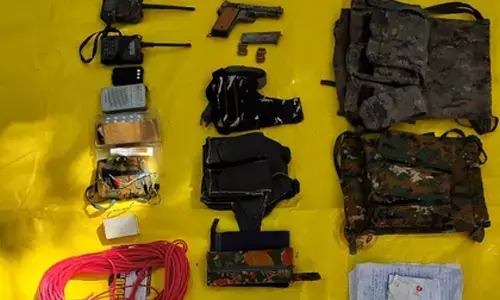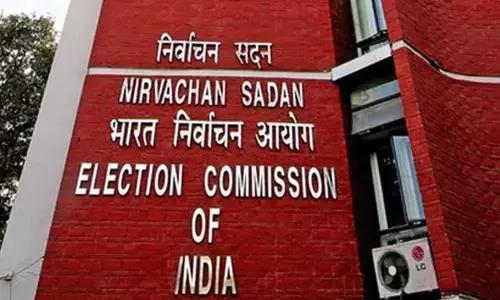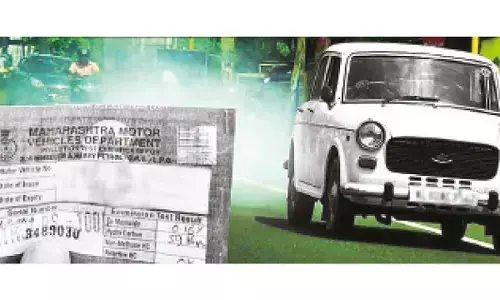Throw light on plot to kill Gandhi

RTI requests regarding information about prosecution and punishment of accused in assassination of Gandhi have raised various points:
Union government has a duty to explain questions about the conspiracy angle in Gandhi’s assassination, earlier attempts on his life, absconding accused, acquittal of some accused, lapses in security, lack of further investigation etc. The people have a right to know this. Like Netaji files, the Gandhi files also need to be disclosed
RTI requests regarding information about prosecution and punishment of accused in assassination of Gandhi have raised various points:
a)There is no comprehensive record of Gandhi files compiled at one place on the assassination of Gandhi;
b)There is no response to the question about two important records as alleged by the appellant; and
c)The National Archives of India is not having all files on Gandhi Assassination with them, and they cannot say anything about it as they are merely recipients of records given by others.
The Information Commissioner visited the National Archives of India, where a section exclusively was arranged for Bapu, with all documents and books on Gandhi. It also has more than 11,000 pages of Mahatma Gandhi Murder Trial records from FIR registered at Tughlak Road Police Station, New Delhi, to the final judgement in East Punjab High Court at Shimla. As the records are old enough and difficult to be handled, the NAI has rightly digitised it and made accessible to them in CD form.
The assassination-related issues were discussed in Constituent Assembly and also in Parliament, a decade after assassination. From the Constituent Assembly of India, following statements were quoted:
“Is it true that on the day of the bomb blast during the search of the room at Marina Hotel clothes were found bearing the initials N.V.G. (Nathuram Vinayak Godse) on the basis of which the police went to Bombay and requested the Bombay police to look for this person, the Bombay police assured the Delhi police to do the needful and asked them to return, but did nothing. Is it true that the Bombay Police failed in tracing Nathuram Vinayak Godse? — Balkrishna Sharma, during the debate on murder of Mahatma Gandhi in the Constituent Assembly of India.
To comment on matters under investigation is both difficult and unwarranted. I can only say that after the arrest and interrogation of the bomber, an officer of Delhi police went to Bombay and briefed the C.I.D. in Bombay. After the briefing, it was decided that some people should be arrested but to arrest them immediately would lead to the other conspirators going underground.
So the Delhi police and Bombay C.I.D. decided to defer the arrests for some time to enable them to uncover the conspiracy and all who were involved in it. It is true that the police were on a look out for them but all of them were not in Bombay, — Sardar Patel, during the debate on murder of Mahatma Gandhi in the Constituent Assembly of India.”
Parliament was agitated about this incident and the then Home Minister Guljari Lal Nanda responded to the feelings of the members of Rajya Sabha. This discussion led to appointment of Justice Jivanlal Kapur Commission of Inquiry into the conspiracy to assassinate Mahatma Gandhi.
Author Jagdishchandra Jain, in his book ‘Gandhi, the forgotten Mahatma,’ summarised the work of JL Kapur as follows:
“Justice Jivanlal Kapur was appointed as a one-man Commission to conduct inquiry into the conspiracy to murder Gandhi on November 21, 1966 and was completed on September 30, 1969. It examined 101 witnesses, 407 documents were produced, by witnesses, and the governments of India and Maharashtra.
It had 162 sittings and traveled to Mumbai, Delhi, Nagpur, Dharwad, Pune, Baroda and Chandigarh. Counsels for Governments of Maharashtra and India were R. S. Kotwal and B. B. Lal respectively, they argued their cases for 37 and 13 days respectively. G. V. Ketkar was the first witness to be examined. J. D. Nagarwala and Morarji Desai were the key witnesses who were examined for 15 and 7 days respectively. J. D. Nagarwala was the Deputy Commissioner of Police who was appointed as investigating officer on the murder case and Morarji Desai the Chief Minister of the then Bombay State. (Jain, Jagdishchandra (1987). Gandhi the forgotten Mahatma. New Delhi: Mittal Publications. ISBN 81-7099-037-8.)”
Historian A G Noorani wrote that the Kapur Commission was provided with evidence not produced in the court; especially the testimony of two of Savarkar's close aides - Appa Ramachandra Kasar, his bodyguard, and Gajanan Vishnu Damle, his secretary. The court had earlier exonerated Savarkar for want of corroborative evidence in support of the approver’s confession.
However, Justice Kapur's findings are all too clear. He concluded: "All these facts taken together were destructive of any theory other than the conspiracy to murder by Savarkar and his group” (Noorani, A. G. (March 15–28, 2003). "Savarkar and Gandhi". The Hindu).
Quoting Noorani, A G (15–28 March 2003). "Savarkar and Gandhi". FrontLine. (The Hindu) and Rajesh Ramchandran The Mastermind? Outlook Magazine 6 September 2004, it was explained: “Kapur commission also examined Savarkar's role in the assassination. Godse had claimed full responsibility for planning and carrying out the attack, in absence of an independent corroboration of the prosecution witness Digambar Badge's evidence implicating Savarkar directly, the court exonerated him citing insufficient evidence.
According to Badge, on 17 January 1948, Nathuram Godse went to have a last darshan of Savarkar in Bombay before the assassination. While Badge and Shankar waited outside, Nathuram and Apte went in. On coming out Apte told Badge that Savarkar blessed them “Yashasvi houn ya” (“यशस्वी होऊन या”) return victorious). Apte also said that Savarkar predicted that Gandhiji's 100 years were over and there was no doubt that the task would be successfully finished. However, Badge’s testimony was not accepted as it lacked independent corroboration.
This was later corroborated by the testimony of two of Savarkar's close aides – Appa Ramachandra Kasar, his bodyguard, and Gajanan Vishnu Damle, his secretary – who had not testified in the original trial but later testified before the Justice Kapur Commission set up in 1965. Kasar told the Kapur Commission that they visited him on or about 23 or 24 January, which was when they returned from Delhi after the bomb incident. Damle deposed that Godse and Apte saw Savarkar in the middle of January and sat with him (Savarkar) in his garden. Justice Kapur concluded: "All these facts taken together were destructive of any theory other than the conspiracy to murder by Savarkar and his group."
Supreme Court Advocate Anil Nauriya wrote in his article in the Hindu, on September 18, 2004: “The Trial Court Record and the Kapur Commission of the Sixties indicate also that the Government had additional material. Morarji Desai, then Bombay's Home Minister, was asked in the trial by Savarkar's lawyer about his reasons for directing "a close watch on Savarkar's house and his movements" after the bomb incident 10 days before the murder.
Desai countered: "Shall I give my reasons? It is for Savarkar to decide whether I should answer. I am prepared to give my reasons." Upon this, Savarkar's lawyer said: "I withdraw my question". [See J.C. Jain, The Murder of Mahatma Gandhi: Prelude and Aftermath, Chetana Ltd, Bombay, 1961, p. 104]. Savarkar personally gave an assurance to the Police Commissioner of Bombay on February 22, 1948 of non-participation in politics if "released on that condition." [For text see K.L. Gauba, Assassination of Mahatma Gandhi, Jaico, Bombay, 1969, pp 208-9]
http://www.thehindu.com/ 2004/09/18/stories/2004091803791000.htm “
Union government has a duty under Section 4 of the RTI Act to explain these questions about the conspiracy angle in Gandhi’s murder conspiracy before it, earlier attempts on his life, absconding accused, acquittal of some accused, lapses in security, lack of further investigation etc. The people have a right to know this. Like Netaji files, the Gandhi files also need to be disclosed. Unfortunately, there is no official compilation record at one place about his death. If the Ministry of Home Affairs could trace the entire record of JL Kapur Commission’s hearings and depositions, documents, and file notings on the same, it will enrich collection.
All this information should be placed in public domain to facilitate research or answer curiosity of the generations to come. The people of present and future ages should have liberty of thought based on entire factual information/documents on this national tragedy of assassination of Mahatma Gandhi, and enough freedom to formulate their own opinion on his life and achievement. (Based on the CIC decision in CIC/SH/A/2016/001055, Hemanta Panda v. PIO, M/o Culture, dated 16.2.2017)

